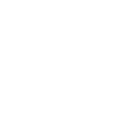Upgrade using Admin Studio
What are the requirements to do upgrade using Admin Studio?
Please explain step by step procedure to do upgrade and taq in advace
Answers (2)
http://www.itninja.com/question/how-to-use-upgrade-table-in-installshield-adminstudio
Have you gone through this
http://www.itninja.com/question/how-to-use-upgrade-table-in-installshield-adminstudio
Comments:
-
Taq a lot and i do have some doubts
UpgradeCode - UpgradeCode of Ver1
VersionMin - NULL
VersionMax - ProductVersion of Ver2
Language - ProductLanguage of Ver1
Attributes - 512
REMOVE - NULL
ActionProperty - UPGRADE_01
The property specified in ActionProperty must be a public property and you must add the property to the SecureCustomProperties property. Each row in the Upgrade table must have a unique ActionProperty value.
If the above conf. is not working then, in addition to that check that the RemoveExistingProducts standard action lies between the InstallValidate and InstallInitialise actions.
What will do attribute-512 and ActionProperty- UPGRADE_01
and one more question is do i need to write any type of custom action for this - vinodreddy10 11 years ago -
You don't have to write any custom action for upgrade..
Attribute 512
Detects the range of versions including the value in VersionMax.
ActionProperty
When the FindRelatedProducts action detects a related product installed on the system, it appends the product code to the property specified in this field. After FindRelatedProducts, the value of this property is a list product codes, separated by semicolons (;), detected on the system. - jagadeish 11 years ago -
RemoveExistingProducts standard action lies between the InstallValidate and InstallInitialise actions.
Where I have to check this and every time I can use action property same or else i have to change - vinodreddy10 11 years ago -
You can find RemoveExistingProducts standard action in Execute Immidiate Sequence..
ActionProperty should be unique in that particular msi/mst... - jagadeish 11 years ago
Sequence Restrictions
The RemoveExistingProducts action must be scheduled in the action sequence in one of the following locations.
Between the InstallValidate action and the InstallInitialize action. In this case, the installer removes the old applications entirely before installing the new applications. This is an inefficient placement for the action because all reused files have to be recopied.
After the InstallInitialize actionand before any actions that generate execution script.
Between the InstallExecute action, or the InstallExecuteAgain action, and the InstallFinalize action. Generally the last three actions are scheduled right after one another: InstallExecute, RemoveExistingProducts, and InstallFinalize. In this case the updated files are installed first and then the old files are removed. However, if the removal of the old application fails, then the installer rolls back both the removal of the old application and the install of the new application.
After the InstallFinalize action. This is the most efficient placement for the action. In this case, the installer updates files before removing the old applications. Only the files being updated get installed during the installation. If the removal of the old application fails, then the installer only rolls back the uninstallation of the old application.


